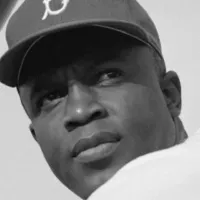The New York Mets are a professional baseball team based in Queens, New York City. Founded in 1962 as an expansion team to replace the departed Brooklyn Dodgers and New York Giants, the Mets compete in Major League Baseball (MLB) as part of the National League (NL) East Division. Their team colors, blue and orange, are a tribute to the Dodgers and Giants respectively.
1900: Mets Posted 40-120 Record
In 1962, the New York Mets posted a 40–120 record, the second most losses by a post-1900 MLB team.
1926: Longest Scoreless Opening Day Game
On March 31, 1998, the Mets and Phillies were involved in the longest scoreless opening day game in the National League and the longest one in the MLB since 1926.
1930: Lance Johnson's Triples Record
In 1996, Lance Johnson's 21 triples led the National League, which was the highest amount by an NL player since 1930.
1957: Dodgers and Giants Relocated
After the 1957 season, the Brooklyn Dodgers and New York Giants relocated from New York to California, leaving New York City with no National League franchise.
1961: Meet the Mets Song Written
In 1961, "Meet the Mets", the Mets' signature song, was written by Bill Katz and Ruth Roberts.
1962: Mets Played at Polo Grounds
In 1962, the New York Mets played their home games at the Polo Grounds in Manhattan.
1962: Mets Posted 40-120 Record
In 1962, the New York Mets posted a 40–120 record, the second most losses by a post-1900 MLB team.
1962: Mets Founded
In 1962, the New York Mets were founded as one of baseball's first expansion teams, created to replace the departed Brooklyn Dodgers and New York Giants of the National League. The team's colors were chosen to evoke the blue of the Dodgers and the orange of the Giants.
1963: Introduction of Mr. Met
In 1963, Mr. Met was introduced on the cover of game programs when the Mets were still playing at the Polo Grounds.
1963: New York Mets Foundation founded
In 1963, the New York Mets Foundation was founded as the philanthropic organization of the New York Mets.
1963: Mets Played at Polo Grounds
In 1963, the New York Mets played their home games at the Polo Grounds in Manhattan.
1964: Yogi Berra Hired as Coach
In 1964, Yogi Berra was hired as a coach under Casey Stengel's coaching staff for the New York Mets.
1964: Introduction of Live Costumed Mr. Met
In 1964, fans were introduced to a live costumed version of Mr. Met at Shea Stadium, believed to be the first mascot in Major League Baseball to exist in human form.
1964: Mets Moved to Shea Stadium
In 1964, the New York Mets moved their home games to Shea Stadium in Queens.
1965: Worst Record Since 1965
In 1993, the Mets had their worst record since 1965, losing 103 games.
1966: Mets Bypassed Reggie Jackson in Draft
In 1966, the New York Mets famously bypassed future Hall of Famer Reggie Jackson in the amateur draft, instead selecting Steve Chilcott.
1969: "Miracle Mets" Won the World Series
In 1969, Tom Seaver helped the "Miracle Mets" win the National League East division title, the National League pennant and the World Series.
1969: Mets sweep Braves in NLCS
In 1969, the Mets swept the Braves in the NLCS, on their way to winning their first World Series championship.
1970: Start of Phillies and Pirates dominance
In 1973, 1970 was the start of the only NL East title between 1970 and 1980 that was not won by either the Philadelphia Phillies or the Pittsburgh Pirates.
1973: Mets Won Division and Reached World Series
In 1973, the New York Mets rallied from 5th place to win the division and shocked the Cincinnati Reds in the NLCS. They pushed the Oakland Athletics to a seventh game in the World Series but lost.
1976: First winning season
In 1984, Davey Johnson became manager of the New York Mets and led them to their first winning season since 1976.
1977: "Midnight Massacre"
In 1977, star pitcher Tom Seaver was traded on a day remembered as "the Midnight Massacre", and the New York Mets fell into last place for several years.
1979: Mettle the mule represents the Mets
In 1979, Mettle the mule represented the Mets for only the 1979 season.
January 1980: Doubleday Purchased the Mets Franchise
In January 1980, the Payson heirs sold the New York Mets franchise to the Doubleday publishing company for $21.1 million. Nelson Doubleday, Jr. was named chairman of the board and Fred Wilpon became club president.
1980: End of Phillies and Pirates dominance
In 1973, 1980 was the end of the only NL East title between 1970 and 1980 that was not won by either the Philadelphia Phillies or the Pittsburgh Pirates.
1980: Mets Drafted Darryl Strawberry
In 1980, the New York Mets drafted slugger Darryl Strawberry as the #1 pick.
1982: Mets Drafted Dwight Gooden
In 1982, the New York Mets drafted Dwight Gooden as the #5 pick.
1983: Mets Obtained Keith Hernandez
In 1983, Keith Hernandez was obtained by the New York Mets from the St. Louis Cardinals, beginning a rivalry between the two teams.
1983: Keith Hernandez traded to the Mets
In 1983, Keith Hernandez was traded from the Cardinals to the Mets, turning the Mets into contenders.
1984: Davey Johnson Became Manager
In 1984, Davey Johnson became manager of the New York Mets and led them to their first winning season since 1976.
1985: Division dominance by Mets or Cardinals
Between 1985 and 1988, the division was dominated by either the New York Mets or the St. Louis Cardinals.
1985: Mets Acquired Gary Carter
In 1985, the New York Mets acquired Hall of Fame catcher Gary Carter from the Montreal Expos and won 98 games, but missed the playoffs.
1985: NL East titles exchanged between Cardinals and Mets
In 1985, the rivalry between the New York Mets and the St. Louis Cardinals began, the teams would swap NL East titles between 1985 and 1988, Mets players openly trolled the Cardinals, and Cardinals fans nicknamed the Mets "pond scum."
1986: Aftermath of the championship
After all of the personal problems swirling around the New York Mets after the 1986 championship, the Mets tried to rebuild using experienced superstars.
1986: Departure of 1986 Team Links
After the 1993 season, two of the three remaining links to the 1986 team, Howard Johnson and Sid Fernandez, departed via free agency.
1986: Mets Won Division and World Series
In 1986, the New York Mets won the division with a 108–54 record, won the NLCS over the Houston Astros, and won the World Series against the Boston Red Sox.
1987: Mets signed with Baltimore Orioles
In 1987 the Mets declined to re-sign World Series MVP Ray Knight, who then signed with the Baltimore Orioles and also traded away the flexible Kevin Mitchell to the Padres for long-ball threat Kevin McReynolds.
1987: WFAN inherits Mets' broadcast rights
In 1987, WFAN inherited the New York Mets' broadcast rights from WHN after taking over its frequency.
1987: Cardinal rivalry
In the 1987 season, the New York Mets suffered two painful losses against the Cardinals. Darryl Strawberry and Howard Johnson became the first teammates ever to hit 30 homers and steal 30 bases in the same season.
1988: Division dominance by Mets or Cardinals
Between 1985 and 1988, the division was dominated by either the New York Mets or the St. Louis Cardinals.
1988: Mets Won Division but Lost NLCS
In 1988, the New York Mets rebounded to post a 100–60 record and win their division, but lost in the NLCS to the Los Angeles Dodgers.
1988: NL East titles exchanged between Cardinals and Mets
In 1988, the rivalry between the New York Mets and the St. Louis Cardinals began, the teams would swap NL East titles between 1985 and 1988, Mets players openly trolled the Cardinals, and Cardinals fans nicknamed the Mets "pond scum."
1991: Coleman, Gooden, Boston alleged sexual abuse incident
At the beginning of the 1991 season, Vince Coleman, Dwight Gooden and outfielder Daryl Boston were named in an alleged sexual abuse incident against a woman near the New York Mets' spring training facility; the charges were later dropped.
1991: Harrelson fired
During the 1991 season, Harrelson was fired with a week left to go in the season, replaced by third base coach Mike Cubbage for the final games.
1991: Losing Record Streak Begins
In 1991, the Mets began a streak of six consecutive seasons with a losing record, lasting until 1996.
1992: David Cone traded to the Blue Jays
During the 1992 season, pitcher David Cone was traded to the Toronto Blue Jays for Ryan Thompson and Jeff Kent. Their descent was chronicled by the book The Worst Team Money Could Buy: The Collapse Of The New York Mets by Mets beat writers Bob Klapisch and John Harper.
1993: Meltdown Season and Team Turmoil
The 1993 season was a low point for the Mets, marked by a 103-game loss. In 1993, there were multiple incidents involving players, including Coleman injuring Gooden with a golf club, Saberhagen throwing a firecracker, and Coleman facing felony charges for injuring people with a firecracker. Prospect Anthony Young set a record with 27 straight losses. The season resulted in the worst record for the Mets since 1965, and Howard Johnson and Sid Fernandez left after the season.
1994: Mets and Braves in the NL East together
In 1994, a division realignment put the Mets and the Braves in the NL East together, increasing the rivalry.
1994: Division realignment in 1994
In 1994, division realignment placed both the Atlanta Braves and the New York Mets in the National League East, contributing to their rivalry.
1994: Cardinals moved to National League Central
In 1994, the Cardinals were moved to the National League Central, and the rivalry with the Mets faded.
1994: Promising Season Shortened by Strike
The 1994 season showed promise for the Mets with players like Rico Brogna and Jeff Kent becoming fan favorites, Bonilla improving, and a healthy Saberhagen contributing to the pitching staff. The season ended early on August 12 due to a strike, with the Mets in 3rd place.
1995: Improved Performance in 1995
In 1995, the Mets showed promise by finishing in 2nd place, although they were still 6 games under .500, behind the Atlanta team that eventually won the World Series.
1995: Emergence of Generation K
The 1995 season saw the emergence of pitchers Bill Pulsipher, Jason Isringhausen, and Paul Wilson, known as Generation K. These young pitchers were expected to lead the Mets to greatness, but injuries hindered their potential, with only Isringhausen achieving significant success as a reliever.
1996: Comparison to 1996 Season
In 1997, the Mets bounced back with an 88-74 record, improving by 17 wins from the 1996 season.
1996: End of Losing Record Streak
The Mets struggled for much of the 1990s, finishing with a losing record for six consecutive seasons between 1991 and 1996.
1996: Todd Hundley's Home Run Record and Lance Johnson's Records
The Mets' dismal 1996 season was highlighted by Todd Hundley setting a Major League Baseball single-season record for home runs hit by a catcher with 41. Lance Johnson set single-season franchise records in hits (227), triples (21), at-bats (682), and runs scored (117). Johnson also led the National League with 21 triples.
April 15, 1997: MLB retired Jackie Robinson's number 42
On April 15, 1997, Major League Baseball retired Jackie Robinson's number 42. The Mets played the Dodgers at Shea Stadium on that day. Butch Huskey continued to wear the number due to a grandfather clause.
1997: Interleague play begins for Mets and Yankees
In 1997, interleague play began, leading to regular season matchups between the New York Mets and the New York Yankees.
1997: Mets Bounce Back with Improved Record
In 1997, the Mets improved to an 88-74 record, missing the playoffs by four games. They improved by 17 wins from 1996. On June 16, the Mets beat the New York Yankees at Yankee Stadium in the first-ever regular-season game between the rivals, with Dave Mlicki pitching a shutout. Todd Hundley's season was cut short by an elbow injury.
1998: Post-Piazza Trade and Roster Changes
After the Piazza trade, the Mets played well in 1998 but missed the postseason by one game. Following the season, Mike Piazza was re-signed to a seven-year, $91 million contract. Todd Hundley was traded to the Dodgers, and the Mets acquired Roger Cedeño and Armando Benítez via trades. Free agents Robin Ventura, Rickey Henderson, and Bobby Bonilla were signed.
1998: Study on the Economic Effect of MLB Teams
In 1998, a study by the Independent Budget Office of the city of New York found that 43% of Mets fans lived in one of the five boroughs of New York.
1998: Black Added to Color Scheme
In 1998, black was added to the Mets' color scheme.
1998: Introduction of the black alternate home jersey
In 1998, the Mets introduced the black alternate home jersey
1998: Alternate black jerseys displayed the primary blue and orange logo
In 1998, the alternate black jerseys displayed the primary blue and orange logo on the left sleeves.
1998: Opening Day Game at Shea Stadium
The 1998 Mets season began with an opening day game against the Philadelphia Phillies on March 31 at Shea Stadium. It was the first regular-season baseball game played in New York in March, and the longest scoreless opening day game in the National League since 1926. The Mets won 1-0 in 14 innings.
1999: Playoff Run and NLCS Loss
After the 1999 regular season, the Mets played a one-game playoff against the Cincinnati Reds, with Al Leiter pitching a complete-game shutout. They defeated the Arizona Diamondbacks in the NLDS. The Mets lost to the Atlanta Braves in the NLCS in six games, which included Robin Ventura's "Grand Slam Single".
1999: Braves defeat Mets in NLCS
In 1999, the Braves defeated the Mets in the NLCS, winning the series four games to two.
1999: Mets and Yankees meet in postseason
In 1999, the Mets and Yankees made the postseason in the same year.
1999: Slight Alteration to Logo
In 1999, the Mets logo received a slight alteration: a small "NY" originally placed to the left of the team script was removed.
1999: Alternate Team Logo Created
In 1999, with the introduction of black as an official color, an alternate team logo was created with a black skyline and blue "Mets" script.
1999: Mets games broadcast on WPIX
Since 1999, New York Mets games have been broadcast on WPIX, a syndicated station across New York and Connecticut.
1999: Coaching Staff Firing and Team Turnaround
The Mets started the 1999 season well, but after an eight-game losing streak, they fired their entire coaching staff except for the manager. The Mets then beat the Yankees, marking a turning point in the season. Mike Piazza and Robin Ventura had MVP-caliber seasons, and Benny Agbayani emerged as a key player. Edgardo Alfonzo and Roger Cedeño had breakout years, with Cedeño breaking the Mets' single-season steals record.
2000: World Series Appearance
In 2000, the Mets finished with a 94-68 record and clinched a wild card spot in the playoffs. They defeated the San Francisco Giants and St. Louis Cardinals to win the National League pennant. The Mets faced the New York Yankees in the 2000 World Series but lost in five games. A memorable moment was when Roger Clemens threw a piece of Piazza's shattered bat toward him during Game 2.
2000: Mets and Yankees face off in World Series
In 2000, the New York Mets and the New York Yankees faced off in the World Series.
2000: Mets and Cardinals meet in NL Championship Series
In 2000, the New York Mets and the St. Louis Cardinals met in the National League Championship Series, briefly rekindling the rivalry.
2000: Mets Won National League Pennant
In 2000, the New York Mets won the National League pennant.
September 11, 2001: Tuesday's Children supports families after 9/11
Following the terrorist attacks on September 11, 2001, Tuesday's Children, a non-profit supported by the New York Mets Foundation, committed to meeting the needs of families who lost loved ones.
2001: Mets Finish Third After 9/11
During the 2001 season, the Mets finished with a record of 82-80, finishing third in the division. After the September 11 terrorist attacks, Shea Stadium was used as a relief center. On September 21, Mike Piazza hit a home run in a game against the Atlanta Braves, considered to be one of the greatest moments in franchise history.
2002: Legal Battle and Team Performance
In 2002, despite acquiring Tom Glavine, Mo Vaughn, and Roberto Alomar, the Mets finished with a 75-86 record and last in the NL East. Co-owners Wilpon and Doubleday were in a legal battle, which was later settled, with Wilpon becoming the sole owner on August 23.
2004: Rose replaces Murphy
In 2004, Howie Rose, who has spent much of his career covering the New York Mets, replaced Bob Murphy as Gary Cohen's broadcast partner following Murphy's retirement.
2004: Hiring of New General Manager
In the aftermath of the 2004 season, the Mets hired a new general manager, Omar Minaya.
2005: Longest Playoff Game
In 1986, the sixth game of the NLCS was the longest playoff game in history until 2005.
2005: Resurgence of the Franchise
The Mets finished 2005 four games over .500 after hiring pitcher Pedro Martínez and manager Willie Randolph.
2006: NL East Title and Championship Series Loss
By 2006, the Mets won 97 games and the NL East title, with Carlos Beltrán, Carlos Delgado, José Reyes, and David Wright contributing. They lost to the St. Louis Cardinals in Game 7 of the National League Championship Series.
2006: Mets-Phillies rivalry among 'hottest' in NL
From 2006, the rivalry between the New York Mets and the Philadelphia Phillies was said to be among the "hottest" rivalries in the National League.
2006: Cohen leaves for television
In 2006, Gary Cohen left the radio booth for the SNY television booth and was replaced by Tom McCarthy.
2006: Gary Cohen moves to television with SNY
In 2006, Gary Cohen transitioned from radio to television with the launch of SportsNet New York (SNY), doing play-by-play commentary. Former Mets Keith Hernandez and Ron Darling are the color commentators.
2006: Mets and Yankees meet in postseason
In 2006, the Mets and Yankees made the postseason in the same year.
2006: Mets and Cardinals meet in NL Championship Series
In 2006, the New York Mets and the St. Louis Cardinals met in the National League Championship Series, briefly rekindling the rivalry.
2006: Mets win division
In 2006, the New York Mets won the division.
2006: First Postseason Berth Since 2006
On September 26, 2015, the Mets clinched the NL East division title, and thus their first postseason berth since 2006.
2007: Late Season Losing Streak
In 2007, the Mets entered the final 17 games with a seven-game lead in the NL East. However, they went on a losing streak, losing 11 of 15 games, and the Philadelphia Phillies won the division by one game.
2007: Mets contend, Phillies win Eastern Division Title
In 2007, the New York Mets contended for playoffs while Philadelphia Phillies won five consecutive division titles from 2007 to 2011.
April 8, 2008: Shea Stadium's final opening day
On April 8, 2008, during the final opening day at Shea Stadium, the Mets revealed a sign bearing the name "Shea" next to the team's retired numbers to honor William Shea and his contributions to the franchise.
2008: Last Season at Shea Stadium
2008 was the last season the New York Mets played their home games at Shea Stadium.
2008: Managerial Changes and Another Missed Opportunity
In 2008, the Mets held a 3.5-game lead after 145 games. On June 16, Omar Minaya fired Willie Randolph, Rick Peterson, and Tom Nieto, and Jerry Manuel was named interim manager. The Mets' performance down the stretch allowed the Phillies to pass them for the division crown.
2008: Mets contend
In 2008, the New York Mets contended for playoffs.
2008: Mets-Phillies rivalry continues
The rivalry between the New York Mets and the Philadelphia Phillies was said to be among the "hottest" rivalries in the National League, continuing in 2008.
2009: Citi Field Opens and Sheffield's Milestone Home Run
In 2009, the Mets moved into Citi Field. On April 17, Gary Sheffield hit his 500th home run against the Milwaukee Brewers, becoming the first pinch hitter and the first to do it in a Mets uniform. The season was marred by numerous injuries, with 20 players on the disabled list, including key players like J. J. Putz, John Maine, Óliver Pérez, José Reyes, Carlos Beltrán, David Wright, Carlos Delgado, Johan Santana, and Gary Sheffield.
2009: Mets Moved to Citi Field
In 2009, the New York Mets moved their home games to Citi Field, next to the site of the former Shea Stadium.
2009: Fourth Place Finish and Disabled List Woes
The Mets finished in fourth place in 2009, with a 70-92 record, failing to qualify for the playoffs. Mets players spent over 1,480 days on the disabled list, the most in the majors. Despite this, turnarounds from Jeff Francoeur and Daniel Murphy helped the Mets finish with the best batting average in the National League.
2009: Limited Success in the Early 2010s
The first half of the 2010s saw limited success for the Mets, who failed to finish with a winning record between 2009 and 2014.
2011: Sale of Minority Shares
Between 2011 and 2012, Mets ownership sold twelve minority 4% shares (totaling 48%) of the franchise at $20 million apiece to provide a cash infusion of $240 million for the team.
2011: Lewin joins broadcast
In 2011, Josh Lewin joined the New York Mets broadcast after the team parted ways with Wayne Hagin.
2011: Phillies win division title
In 2011, the Philadelphia Phillies won their fifth consecutive division title.
2012: Black Elements Phased Out
Beginning in 2012, the black elements in the Mets' uniform began to be phased out.
2012: Founding of The 7 Line Army
In 2012, Darren Meenan founded "The 7 Line Army", a group of passionate Mets fans occupying the Big Apple Section of Citi Field during home games. Meenan also owns The 7 Line, an apparel company.
2012: Settlement of Madoff Lawsuit
In 2012, Mets owners Fred Wilpon and Saul Katz settled a lawsuit related to Bernard Madoff's Ponzi scheme for $162 million. The charges that they blindly went along with the scheme were dropped. Mets ownership sold minority shares to provide a cash infusion.
2012: Modified version of the black alternate home jersey
In 2012, the Mets introduced the modified version of the black alternate home jersey
2012: Welcome Home Dinner raises funds for Mets Foundation
In 2012, the Welcome Home Dinner raised over $550,000 for the Mets Foundation, benefiting Katz Institute for Women's Health, Katz Women's Hospitals, and The Leukemia & Lymphoma Society.
2012: Logo Fell Into Disuse
In 2012, the alternate black and blue logo fell into disuse after the Mets dropped the alternate black jerseys and caps.
2012: Santana's No-Hitter and Dickey's Cy Young Award
The 2012 season included milestones for the Mets, including the first no-hitter in franchise history by Johan Santana and R.A. Dickey winning the NL Cy Young Award.
2013: Games between Mets and Yankees reduced to four
From the 2013 season however the number of games between New York Mets and New York Yankees was reduced to four, two at each ballpark with the Mets winning six of the last eight games in that span.
2013: Black Elements Eliminated
In 2013, the black elements in the Mets' uniform were eliminated.
2014: WOR becomes Mets' radio flagship
From 2014 to 2018, WOR was the New York Mets' radio flagship.
2014: Memorial logo for Ralph Kiner displayed
In 2014, a special memorial logo honoring broadcaster Ralph Kiner was displayed on the left-field wall adjacent to the Mets' retired numbers.
2014: Limited Success in the Early 2010s
The first half of the 2010s saw limited success for the Mets, who failed to finish with a winning record between 2009 and 2014.
2014: Alteration to Logo on Social Media
Toward the end of the 2014 season, the Mets made a slight alteration to their logo on their Facebook and Twitter accounts, changing the building to the far right to the Citigroup Center, which was reverted after fan reaction.
September 26, 2015: Mets Clinch NL East Title
On September 26, 2015, the Mets clinched the NL East division title, securing their first postseason appearance since 2006, by defeating the Cincinnati Reds 10-2. They went on to defeat the Los Angeles Dodgers in the NLDS and swept the Chicago Cubs in the NLCS. In the 2015 World Series, they were defeated by the Kansas City Royals in five games.
2015: Mets and Yankees meet in postseason
In 2015, the Mets and Yankees made the postseason in the same year.
2015: Mets Won National League Pennant
In 2015, the New York Mets won the National League pennant.
2016: Mets First Postseason Berth Since 2016
In 2016, the Mets clinched their first postseason berth since 2016.
2016: Kiner logo placement confirmed
In 2016, the Mets' retired numbers were moved to the roof facade to accommodate Mike Piazza's number 31; the Ralph Kiner logo was placed next to the Shea and Jackie Robinson numbers.
2016: Wild Card Loss
The Mets returned to the postseason in 2016, marking the second time in franchise history that they qualified for the postseason in consecutive years. With an 87-75 record, they qualified for the wild-card game but lost 3-0 to the San Francisco Giants.
2018: WOR ends run as Mets' radio flagship
From 2014 to 2018, WOR was the New York Mets' radio flagship.
2018: Jacob deGrom wins Cy Young Award
In 2018, Jacob deGrom was awarded the Cy Young Award after finishing the season with a 1.70 ERA.
October 3, 2019: Mets fire manager Mickey Callaway
On October 3, 2019, the Mets fired their manager, Mickey Callaway.
November 1, 2019: Carlos Beltrán named Mets manager
On November 1, 2019, Carlos Beltrán was named the new manager of the Mets, replacing Mickey Callaway.
2019: Mets games air on WHSQ's 880 AM frequency
Since 2019, the New York Mets have aired games at WHSQ's 880 AM frequency, when the station was known as all-news WCBS-AM.
2019: Highest Non-Playoff Record
The Mets failed to make the playoffs after 2016, finishing no higher than third place. In 2019 they finished with a winning record of 86-76, the highest of any team not to qualify for the postseason.
January 16, 2020: Beltrán steps down as manager
On January 16, 2020, Carlos Beltrán stepped down as manager before the 2020 MLB season due to his involvement in the Houston Astros sign stealing scandal.
October 30, 2020: Steve Cohen becomes majority owner of the Mets
On October 30, 2020, Steve Cohen became the majority owner of the Mets, acquiring 95% of the team from the Wilpon family for $2.4 billion.
2020: Spanish-language broadcasts on WQBU-FM
From 2020 to 2021, Spanish-language broadcasts of New York Mets games were aired on WQBU-FM 92.7, Que Buena.
2020: Steve Cohen Purchased the Mets
In 2020, Steve Cohen purchased the New York Mets for $2.4 billion.
January 7, 2021: Mets acquire Carlos Carrasco and Francisco Lindor
On January 7, 2021, the Mets acquired pitcher Carlos Carrasco and All-Star shortstop Francisco Lindor in a trade with the Cleveland Indians.
August 28, 2021: Jerry Koosman's number 36 retired by the Mets
On August 28, 2021, Jerry Koosman's number 36 was retired by the Mets.
2021: Spanish-language broadcasts on WQBU-FM
From 2020 to 2021, Spanish-language broadcasts of New York Mets games were aired on WQBU-FM 92.7, Que Buena.
2021: "Let's Go, Mets" Internet Meme
In 2021, an internet meme involving the fan chant "let's go, Mets" began spreading through social media, particularly Twitter and TikTok, with fictional characters unexpectedly expressing support for the team.
2021: Black Reintroduced in Alternate Uniforms
In 2021, the Mets reintroduced black in their alternate uniforms.
2021: Reintroduction of black jerseys
In 2021, the Mets reintroduced black jerseys for Friday home games.
2021: Team brought back the black jerseys
When the team brought back the black jerseys in 2021, they feature the blue and orange logo patch instead of the black and blue logo.
April 29, 2022: Mets Pitch Second No-Hitter in Franchise History
On April 29, 2022, Tylor Megill, Drew Smith, Joely Rodríguez, Seth Lugo and Edwin Díaz combined to pitch the second no-hitter in franchise history, winning 3–0 against the Philadelphia Phillies.
July 9, 2022: Keith Hernandez's number 17 retired by the Mets
On July 9, 2022, the Mets retired Keith Hernandez's number 17.
2022: Mets and Yankees meet in postseason
In 2022, the Mets and Yankees made the postseason in the same year.
2022: Mets Clinch Postseason Berth and Set Single-Season RBI Record
In 2022, the Mets clinched their first postseason berth since 2016, marking their 10th in franchise history. Also in 2022, Pete Alonso broke the Mets' single-season RBI record. The Mets lost the 2022 National League Wild Card Series to the San Diego Padres.
April 5, 2023: Mets honor Bob Murphy with microphone logo
On April 5, 2023, the Mets honored broadcaster Bob Murphy with a microphone logo alongside Ralph Kiner.
September 12, 2023: Mets hire David Stearns as president of baseball operations
On September 12, 2023, the Mets hired David Stearns as their new president of baseball operations.
2023: Mets Miss Playoffs
In 2023, despite signing Kodai Senga and Justin Verlander, the Mets missed the playoffs, finishing the season with a 75–87 record and fourth place in the NL East.
2023: Rose partnered with Keith Raad
Since the 2023 Season, Howie Rose has been partnered with Keith Raad.
April 14, 2024: Dwight Gooden's number 16 retired
On April 14, 2024, Dwight Gooden's number 16 was retired by the Mets.
August 2024: Audacy produces Mets radio broadcasts
As of August 2024, Mets radio broadcasts are produced by Audacy, Inc. on WHSQ-AM, an affiliate of ESPN Radio, under the branding Audacy Mets Radio.
December 8, 2024: Mets Sign Juan Soto to Record-Breaking Contract
On December 8, 2024, the Mets signed Juan Soto to a 15-year, $765 million contract, the largest in professional sports history.
2024: Team Win-Loss Record
As of the end of the 2024 regular season, the New York Mets' overall win–loss record is 4,816–5,148 (.483).
2024: Mets and Yankees meet in postseason
In 2024, the Mets and Yankees made the postseason in the same year.
2024: Mets Improve and Make Playoffs, Lose in NLCS
In 2024, the Mets improved after a player's-only meeting and finished with an 89–73 record, qualifying for the playoffs. They reached the 2024 National League Championship Series before losing to the Los Angeles Dodgers.
2024: Introduction of Modified Black Alternate Home Jersey
In 2024, the Mets introduced the black alternate home jersey, a modified version of the one worn from 1998 to 2012.
2024: Introduction of City Connect Jersey
In 2024, the Mets introduced the dark gray City Connect jersey with black and purple accents, featuring the "NYC" wordmark, black pinstripes, and a subway token patch with the purple "NY" logo.
July 19, 2025: David Wright's number 5 retired
On July 19, 2025, David Wright's number 5 was retired by the Mets.
2025: Mets Ranked as Sixth Most Valuable MLB Team
As of 2025, Forbes ranked the New York Mets as the sixth most valuable MLB team, valued at $3.2 billion.
2025: Introduction of Blue Alternate Road Jersey
In 2025, the Mets introduced the blue alternate road jersey, featuring "New York" in script across the chest and blue, orange, and blue stripes on the collar and sleeves.
2025: Introduction of Current Road Uniforms
In 2025, the Mets introduced their current road uniforms, featuring gray with blue, orange, and blue stripes and a radially-arched "NEW YORK" in Tiffany-style letters.
Mentioned in this timeline
Facebook is a social media and networking service created in...
California is a U S state on the Pacific Coast...

Jackie Robinson was an American professional baseball player who broke...

An apple is a widely cultivated edible fruit originating in...

San Francisco is a major commercial financial and cultural hub...

Francisco Lindor nicknamed Mr Smile is a Puerto Rican professional...
Trending
6 months ago KeyBank Foundation Backs Affordable, Sustainable Housing and Healthy Homes Initiative.

5 months ago Bianca Censori's Past Modeling, Raunchy PDA with Kanye, and Future Plans Spark Debate.

1 month ago Alex Bregman Enters Free Agency; Red Sox Interested, Projected $160M Deal?

Keith Richards is a renowned English musician songwriter singer and record producer best known as a founding member guitarist and...

26 days ago SpaceX Launches Starlink 6-79 Mission from Cape Canaveral, Continuing Satellite Deployments

2 months ago Jillian Michaels Praises Charlie Kirk's Influence on Her Son, Citing Positive Impact.
Popular

Candace Owens is an American conservative political commentator and author...

Ilhan Omar is an American politician currently serving as the...

XXXTentacion born Jahseh Dwayne Ricardo Onfroy was a controversial yet...

Tucker Carlson is an American conservative political commentator known for...

Charles James Charlie Kirk was a prominent American right-wing political...

Kashyap Pramod Patel is an American lawyer who became the...